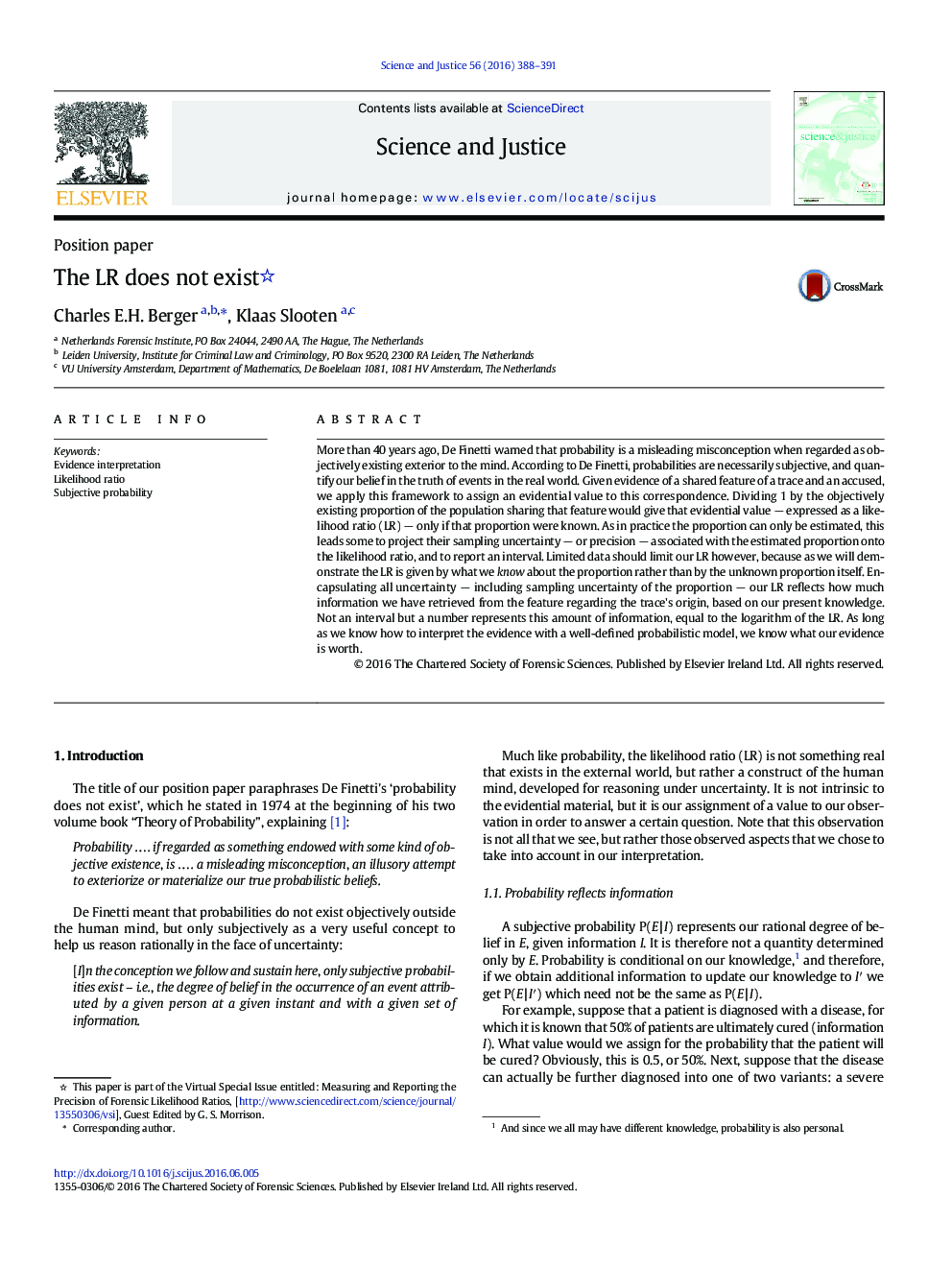| کد مقاله | کد نشریه | سال انتشار | مقاله انگلیسی | نسخه تمام متن |
|---|---|---|---|---|
| 4761354 | 1362096 | 2016 | 4 صفحه PDF | دانلود رایگان |

- Likelihood ratios (LRs) only exist as a concept, useful for reasoning with evidence.
- Proportions are objectively existing quantities and can be estimated and uncertain.
- LRs informed by uncertain proportions do not become uncertain, but closer to 1.
- We demonstrate how limited data limits the LR in several examples.
- There is no need to report an LR with an interval, nor a rational way to use it.
More than 40Â years ago, De Finetti warned that probability is a misleading misconception when regarded as objectively existing exterior to the mind. According to De Finetti, probabilities are necessarily subjective, and quantify our belief in the truth of events in the real world. Given evidence of a shared feature of a trace and an accused, we apply this framework to assign an evidential value to this correspondence. Dividing 1 by the objectively existing proportion of the population sharing that feature would give that evidential value â expressed as a likelihood ratio (LR) â only if that proportion were known. As in practice the proportion can only be estimated, this leads some to project their sampling uncertainty â or precision â associated with the estimated proportion onto the likelihood ratio, and to report an interval. Limited data should limit our LR however, because as we will demonstrate the LR is given by what we know about the proportion rather than by the unknown proportion itself. Encapsulating all uncertainty â including sampling uncertainty of the proportion â our LR reflects how much information we have retrieved from the feature regarding the trace's origin, based on our present knowledge. Not an interval but a number represents this amount of information, equal to the logarithm of the LR. As long as we know how to interpret the evidence with a well-defined probabilistic model, we know what our evidence is worth.
Journal: Science & Justice - Volume 56, Issue 5, September 2016, Pages 388-391